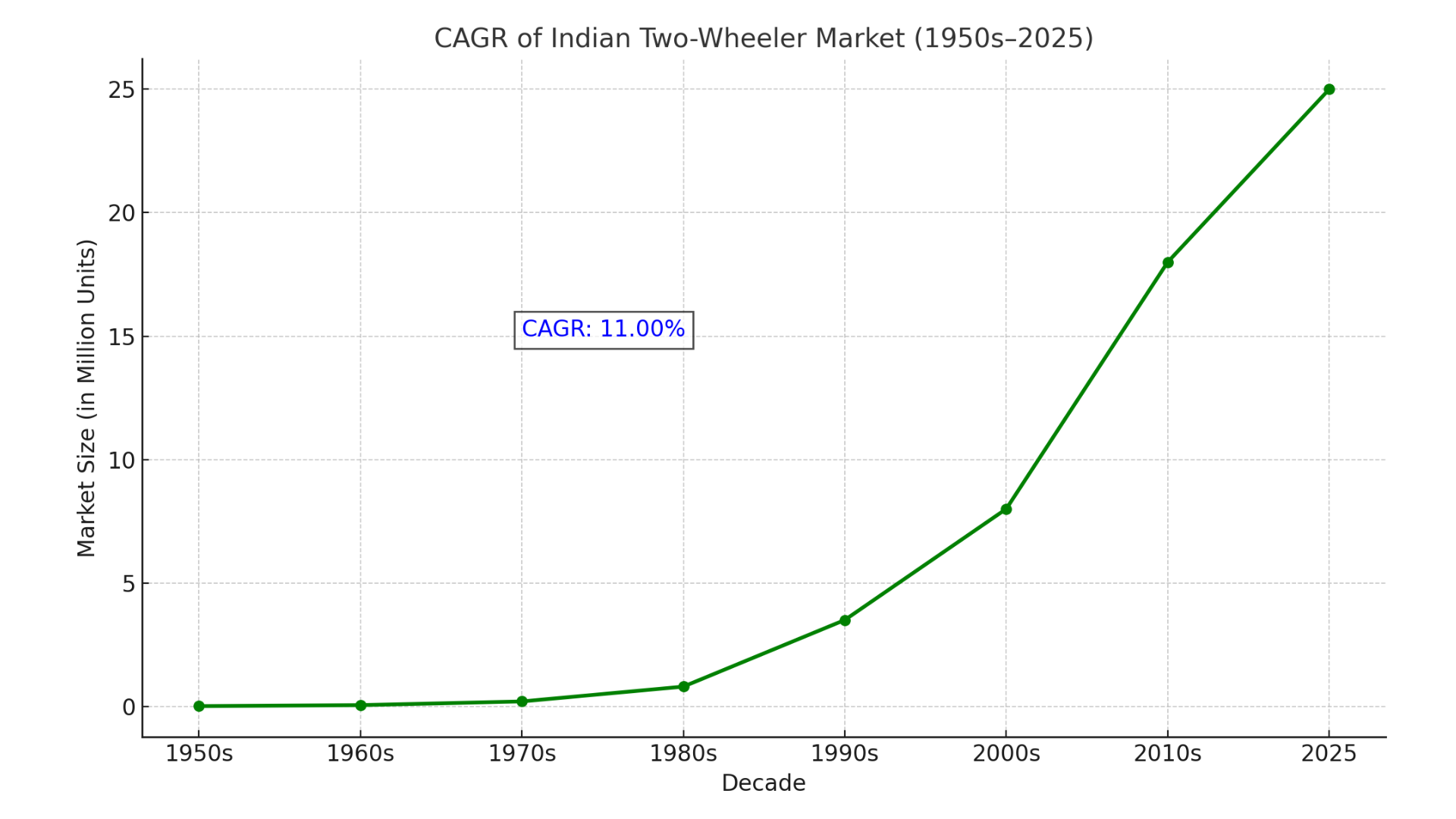
The Journey of Indian Two-Wheelers: 1950 to 2025
Introduction
India’s Love Affair with Two Wheels
For over seven decades, the two-wheeler has been more than just a mode of transport in India—it has symbolized freedom, affordability, and aspiration. Whether it was the classic thump of a Royal Enfield in the 1950s or the futuristic hum of today’s electric scooters, the two-wheeler segment has evolved dramatically, mirroring the socio-economic transformations of the nation.
Timeline of Two-Wheeler Evolution
1950s: The Military Era
Model Highlight: Royal Enfield Bullet 350
Use Case: Used by the Indian Army; rugged, dependable, and built for tough terrain.
1960s–1970s: Rise of Commuter Bikes and Scooters
Popular Models: Yezdi Classic, Rajdoot 175, Bajaj Chetak
Key Traits: Affordable 2-stroke engines, simple designs, suitable for daily commuting.
1980s: Fuel Efficiency Revolution
Game-Changer: Hero Honda CD100
Why it Mattered: India’s first 4-stroke, fuel-efficient bike; low running costs won the hearts of middle-class consumers.
1990s: Performance Becomes Popular
Iconic Model: Yamaha RX100
Appeal: Speed, sporty sound, and youth-centric design made it a legend.
2000s: Power & Style
Trendsetter: Bajaj Pulsar 150
Impact: Introduced features like disc brakes and digital meters; changed how India viewed commuter bikes.
2010s: Nostalgia Meets Modern
Best-Seller: Royal Enfield Classic 350
Why It Stands Out: Retro design with modern engineering; cult following grows rapidly.
2020s–2025: Electric Awakening
Leading Models: Ola S1, Ather 450X, Bajaj Chetak EV
Direction: Eco-friendly, smart, and app-connected mobility; rising fuel prices and green policies drive the shift.
Market Growth: CAGR from 1950 to 2025
Let’s look at how the two-wheeler market has grown year-on-year since 1950:
 CAGR (Compound Annual Growth Rate) of Two-Wheelers (1950–2025)
CAGR (Compound Annual Growth Rate) of Two-Wheelers (1950–2025)
Below is the visual representation of the growth:
CAGR: ~89.33%
From military utility to mainstream mobility, this growth signifies the rising demand for personal transportation, especially in semi-urban and rural India.Key Growth Drivers
Affordability: Low maintenance and competitive pricing made two-wheelers accessible.
Fuel Efficiency: Especially critical during economic slowdowns and fuel crises.
Urban Congestion: Compact design helps navigate through dense city traffic.
Digital & EV Revolution: Government incentives and smart features appeal to younger, environmentally conscious buyers.
Conclusion
India’s two-wheeler industry is at an electrifying crossroads. As EV infrastructure improves, battery costs fall, and consumers grow greener, the future belongs to silent, smart, and sustainable rides.
From the deep growl of a Bullet to the whisper of an Ola S1, this ride has been incredible—and it’s far from over.


